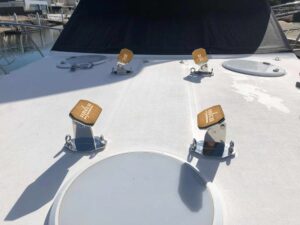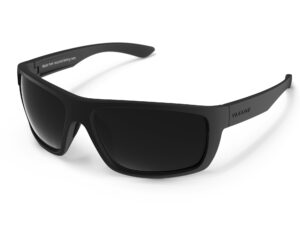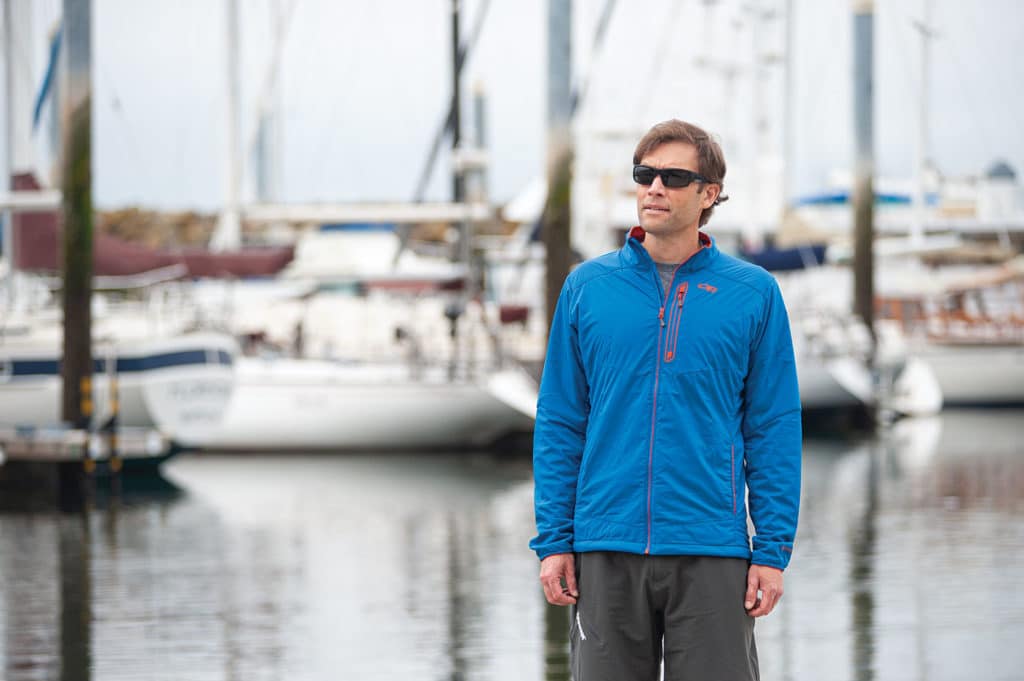
While most sailors have overcome an inhibition or two en route to earning their miles, 40 years of sailing has taught me that hydrophobia is to be embraced when it comes to midlayer garments. Rather than a psychological fear of water or another name for rabies, hydrophobia—or hydrophobe—as a scientific term refers to a material’s tendency to repel water. This in turn, allows a fabric to remain warm and insulating when wet.
In the case of midlayer garments—which serves primarily as insulation under foul-weather gear, while occasionally moonlighting as outer armor for blue-sky days or forays ashore—these qualities can be mission-critical characteristics. Here’s a roundup of some of the warmest, most hydrophobic midlayers afloat, and some information about responsible stewardship of these synthetic fibers.
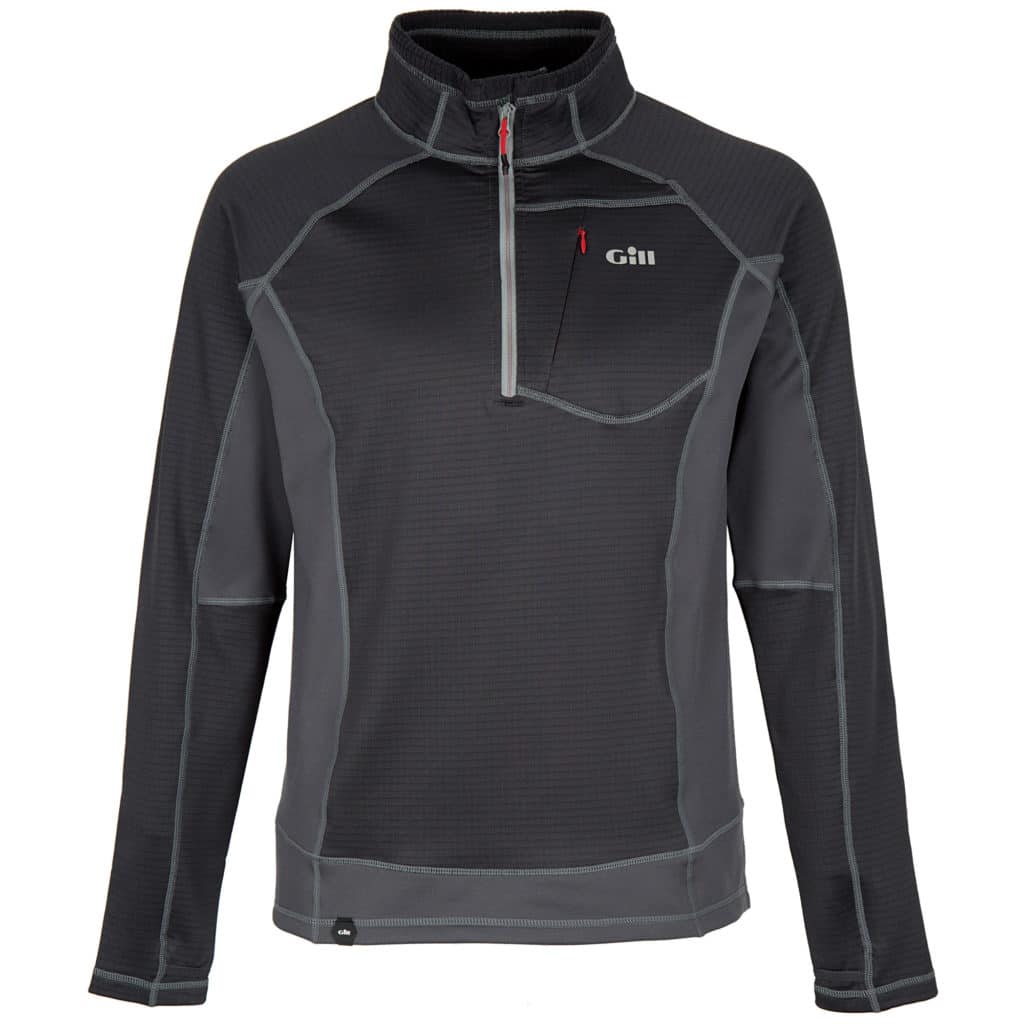
The old saying goes that “if you get your layers right, you’ll get your day right,” and while this might be an overly simplistic outlook, the bottom-line truth for most cruisers is that if they’re warm and dry, they’re (reasonably) happy. Gill Marine solves a piece of the layering puzzle with its Thermogrid zip neck. This toasty-looking midlayer top, which is stitched from a heat-trapping wafflelike fabric with a smooth face and four-way stretch, was designed to allow wearers to quickly increase or decrease the shirt’s warmth factor as conditions demand. For example, the neck zip allows heat to be quickly dumped or trapped, and the shirt’s thumb loops allow users to warm their wrists by hooking the ends of their sleeves around their stubbiest digits. The Thermogrid zip neck also features stretchy side panels that promote ease-of-movement comfort.
Should the zip neck sound like a little bit too much of a good thing, Gill’s Thermogrid vest offers all of these same benefits, plus zippered hand pockets, sans the sleeves.
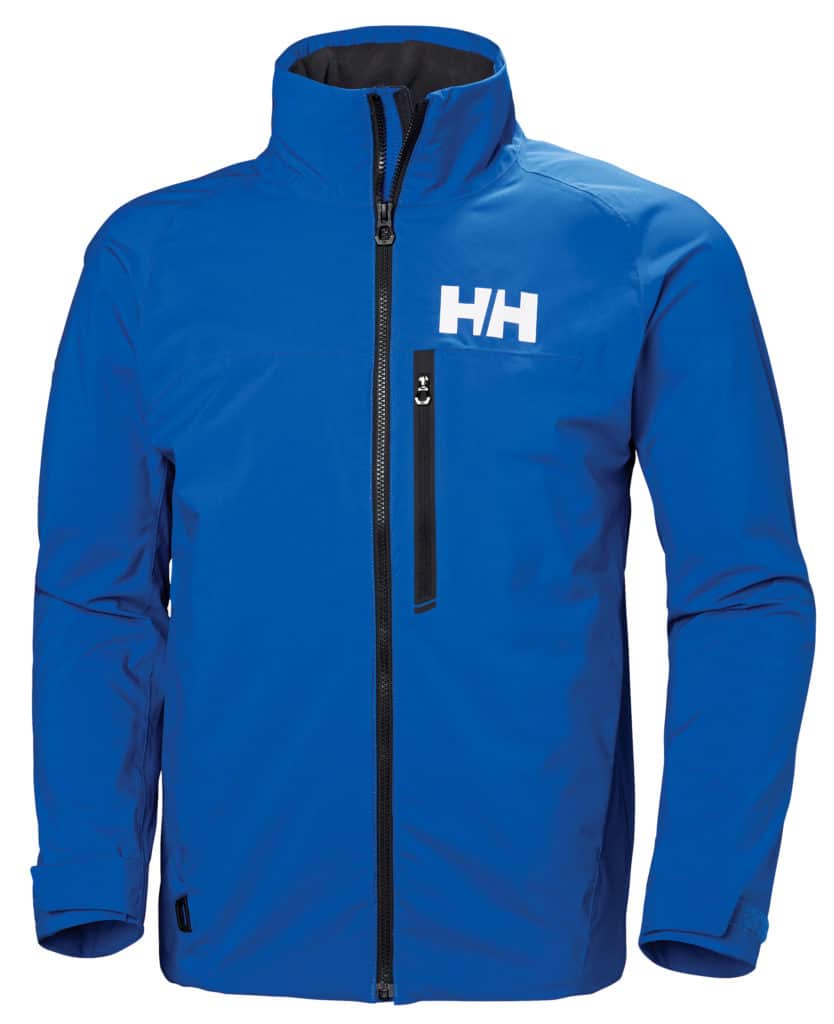
Given Helly Hansen‘s deep Norwegian roots, the company, which was established in 1877, has significant experience equipping sailors for plying cold waters. While Helly builds an entire catalog of sailing equipment, Helly Hansen’s Crew insulator jacket delivers time-proven warmth using PrimaLoft black insulation. The jacket’s outer polyester shell offers water- and wind-resistant performance, and allows it to easily be worn over or under other gear.
Sailors seeking an insulating jacket that can better handle more exposure to the elements should check out Helly Hansen’s HP racing midlayer jacket. This coat uses a proprietary Helly Tech Performance outer shell to deliver breathability, move-with-you stretch, and wind and water protection, and the jacket’s Lifaloft insulation delivers warmth in a lightweight package. Hand-warmer pockets, fully seam-sealed construction, a fleece-lined collar, a hip-length cut and dual breast pockets (one internal, one external) complete the package.
And for cruisers who run warm, Helly Hansen’s Lifaloft insulator vest delivers a serious heat-to-weight ratio—even when wet—without heat-sinking one’s extremities. The vest offers windproof protection and boasts a perfluorinated compound-free durable water-repellent exterior treatment, allowing the vest to be used in conditions ranging from Maine’s famous pea-soup fog to Seattle’s signature “dry” rain.
Long a trusted name in foul-weather gear, Henri Lloyd revealed a fully retooled line of sailing apparel this past spring. This unveiling included the company’s new Fremantle Stripes liner jacket and salopettes, both of which are designed to stand double watches when things get windy and cold. These stylish-looking garments feature a water-repellant, ripstop nylon outer shell and polyester insulation that provides warmth even when wet. The Fremantle Stripes liner jacket uses 70 grams of polyester insulation, and includes finishing details such as articulated sleeves, elastic bindings on the cuffs and hem, and zippered hand-warmer pockets.
The Fremantle Stripes liner salopettes is built out of the same lightweight, shower-resistant nylon shell material, and is insulated using 40-gram and 70-gram polyester insulation that’s been body-mapped to deliver heat where sailors need it most without triggering a sweat sauna. Finishing details include an elastic waist and a stretchy, breathable shoulder and back section that allows for freedom of movement and sheds unneeded heat during flurries of activity.
If you sail in the Pacific Northwest as I do, you’re familiar with fleece’s cozy utility, and Seattle’s own KAMgear makes some of the finest, made-in-the-USA fleece apparel available anywhere. KAMgear’s midlayers, such as the company’s popular Powerzip top, are crafted from Polartec Power Stretch Pro fabrics, which offer four-way stretch, warmth and a proven ability to wick moisture.
As fall’s descent quickens, KAMgear’s Grinder slacks, which are built from Polartec Wind Pro fabrics, are ready to battle the cold, both by blocking the wind and delivering seriously lofted insulation. Grinder slacks also include smart features, such as a durable water-repellant fabric treatment (for increased hydrophobia), Cordura-reinforced knees and seat sections (which allow the slacks to be used as an outer layer until Seattle’s famous rain gets serious), and double-layered pockets.
KAMgear’s Crescent jacket, which is also crafted from Polartec Wind Pro fabrics, derives its performance from the extremely dense fabric weave that delivers a cozy combination of warmth and breathability. A water-repellant finish allows the jacket to bead off water, and the coat also features a high-cut collar (a trademark of all KAMgear sailing tops).
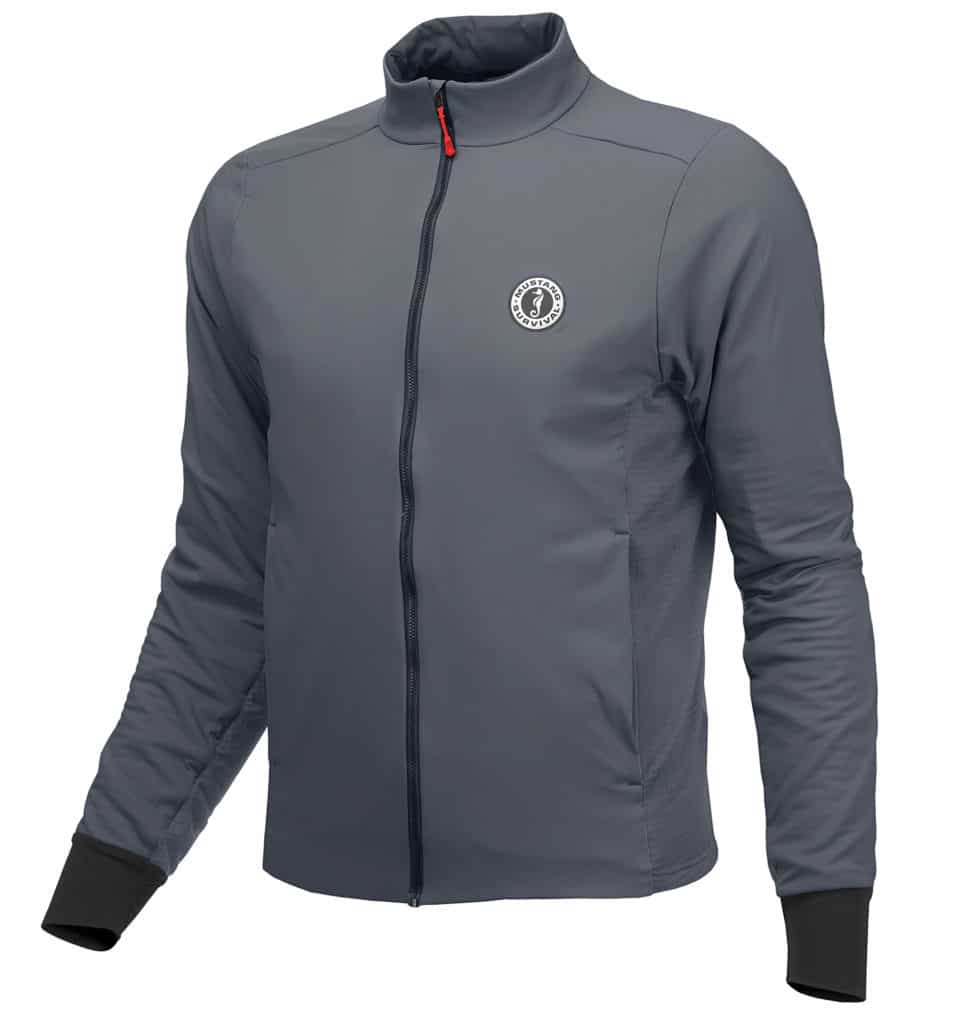
Best known for its marine survival equipment, Mustang Survival rebooted its apparel collection a few years ago. Recently, the Vancouver-based company has been working with professional sailing teams to dial in its heat-regulating system. This starts with Mustang Survival’s Regulate 230 base-layer long-sleeve top** and bottoms, both of which are built out of a blended merino wool and polyester fabric that clocks in at 230 grams per square meter (hence, the garments’ monikers). Both items are constructed using flat-lock seams, and the fabric’s hybrid nature helps ensure long-term fit and odor control.
Mustang Survival’s Torrens jacket picks up where base layers leave off and combats cold using Polartec’s warm-even-when-wet Alpha Active insulation. The Torrens jacket uses a wind-resistant soft-shell outer fabric that features a water-repellant treatment, allowing it to weather light rain, and a soft liner for next-to-body comfort and for wicking away sweat. The coat has stretchy mesh underarm and side panels for enhanced mobility and body-heat regulation. The athletically cut jacket also features two hand-warmer pockets, articulated elbows, and an inside chest pocket, as well as stretchy wrist cuffs that are designed to lock out water.
While long underwear technically isn’t considered a midlayer, merino wool has so thoroughly proved itself among offshore sailors that some people (such as your humble scribe) won’t leave shore without packing a set of merino-wool base layers. Musto’s merino base-layer pant and long-sleeve T-shirt are built out of 100 percent merino wool, which is exceptional at regulating body heat and delivering next-to-skin comfort, sans unnecessary bulk. Moreover, merino wool’s natural antibacterial and odor-repelling qualities enhance your odds of not offending your crewmates.
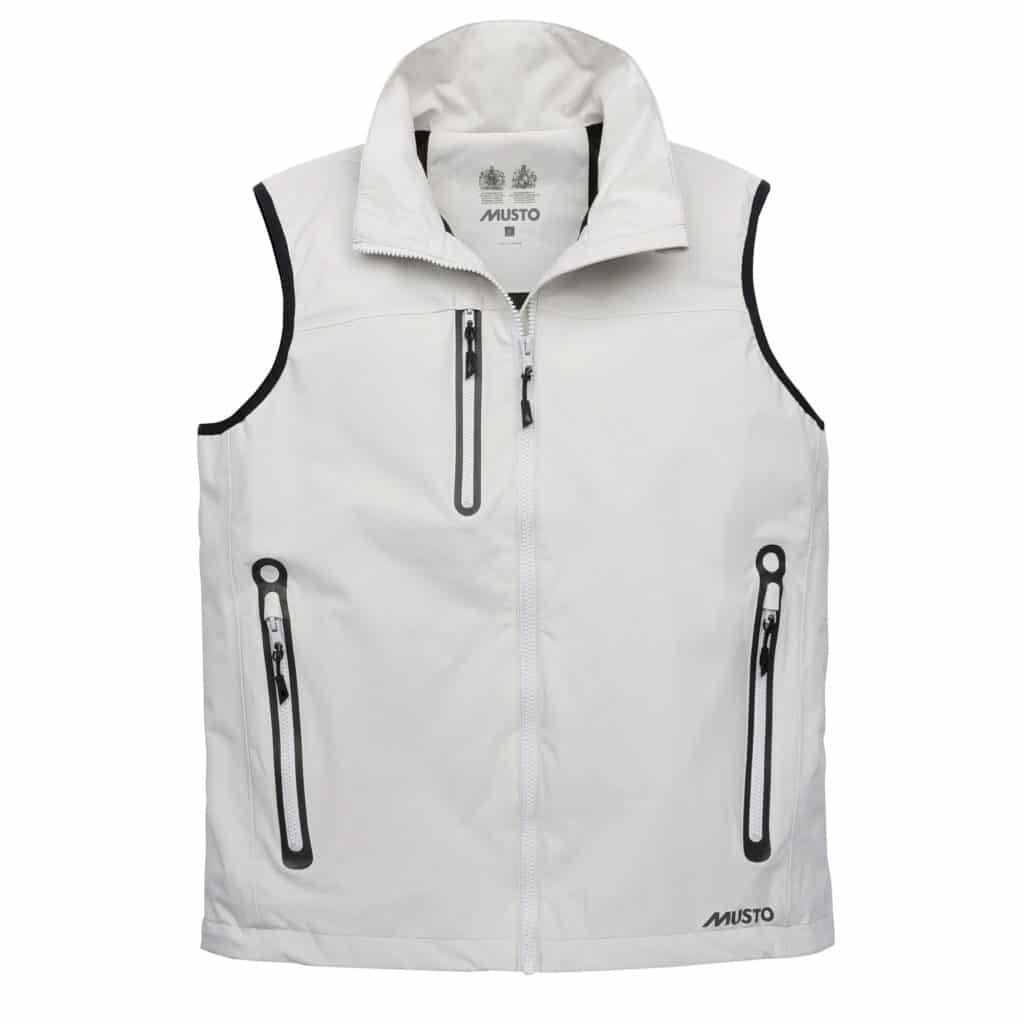
When it comes to regulating core temperature, vests (“gilets” in Musto’s parlance) deliver warmth without restricting arm movement or ventilation. Musto’s BR1 gilet adds comfort on fall days that don’t demand full jackets, while also providing layering versatility for times when the foredeck threatens to freeze.
Finally, Musto’s Extreme thermal fleece top and trousers are built out of stretchy polyester jersey fabric that’s backed with heat-trapping fleece. Both the top and trousers repel water to help you stay dry in light mist or fog, and both use flat-locked seams to reduce bulk and add comfort and durability. The pants feature articulated knees, while the jacket has a tall, heat-retaining collar.
Softshell jackets hit the scene in the late-2000s, forever changing the way that sailors expect their midlayer jackets to move, both on the water and off, and Outdoor Research’s Ferrosi combines the right amount of move-with-you motion and weather protection. To be clear, the Ferrosi won’t stop angry North Atlantic waves—that’s your foulie’s job—but instead acts as a wind and light-spray jacket that deftly moonlights as part of a layering system. The packable jacket includes clever details such as wrist-fitted thumb loops, hand-warmer pockets and a chest pocket.
The Seattle-based company’s Ascendant jacket steps things up from the light-air inventory to more-serious stuff, offering the at-rest warmth of a lightweight down- or synthetic-fill puffy jacket while simultaneously delivering the breathability of a fleece jacket. This is done by using Polartec’s latest-generation Alpha Direct insulation, which is unique in that it doesn’t require an internal liner. This, in turn, allows the jacket to dump more unwanted heat and moisture through its stretch-woven and air-permeable Pertex outer shell.
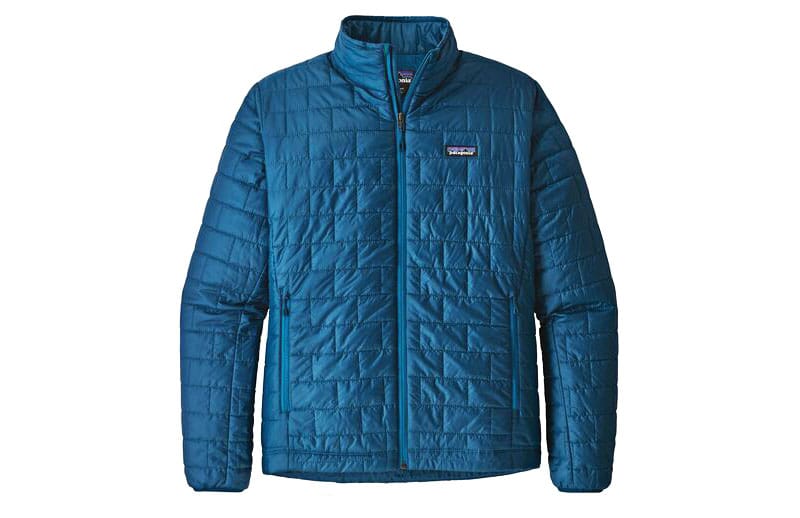
Savvy sailors watch their sun exposure, and Patagonia offers three great tools for creating your own shade: the Tropic Comfort Hoody II, the Women’s Tropic Comfort Hoody and the unisex sun mask. All three are made from fast-drying synthetic fabrics that deliver 50-plus UPF sun protection, making them an ideal next-to-skin layer.
Next up are Patagonia’s legendary R1 pullover fleece shirts, which are available in both male and female cuts. All R1s use Polartec Power Grid fabrics to lock in body heat without adding heft or unnecessary bulk. R1 shirts are super-stretchy and highly durable, and the fabric’s embedded Polygiene odor control helps keep you smelling (relatively) presentable.
For cool days, Patagonia’s men’s and women’s Nano Puff jackets and vests deliver an impressive amount of warmth and wind protection for their tidy, lightweight forms. Nano Puff garments employ ripstop polyester shells that are made from 100 percent recycled materials and PrimaLoft Gold Insulation Eco, which is comprised of 55 percent recycled materials. The resulting jackets and vests easily slide over and under other layers, and both are equally adept when paired with a foul-weather jacket as they are when serving as an outer layer on dry watches.
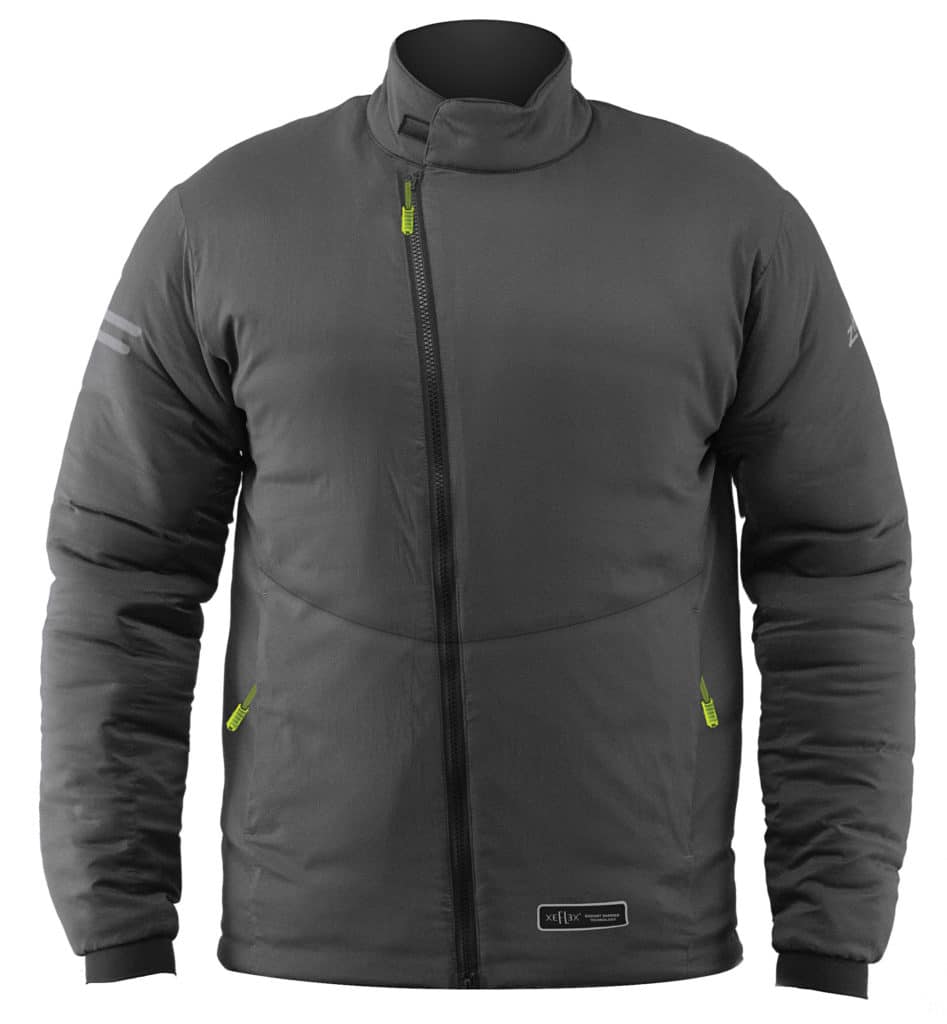
Australia-based Zhik (correctly) believes that proper layering begins at the next-to-skin level, which it facilitates with its HydroMerino base layers. These garments merge merino wool’s best properties (warmth and odor-resistance) with those of polyester (wicking and durability) and polypropylene (hydrophobia and heat retention) to create a warm, highly stretchy weave that was designed specifically for Dongfeng Race Team sailors competing in the 2017-18 edition of the Volvo Ocean Race. Some examples of endemic R&D include external stitching to reduce chafe, and water-repellant fabric on the cuffs, waist hem and ankles.
Once things start cool off, Zhik’s Xeflex jacket and salopettes provide insulating armor against the chill. Unlike most regular synthetic fills, which usually lie parallel with their garment’s shell and liner, and are susceptible to heat-robbing compression, Zhik’s Xeflex uses a vertically lined fill that’s designed to withstand the wind and other compressing elements. Xeflex fabric uses an ultrathin metallic layer that reflects back the wearer’s body heat, keeping sailors warm when the elements turn cold. Both the jacket and salopettes deliver serious warmth for their weight and sea-bag bulk, making them especially useful for sailors who enjoy pushing their sailing and seasonal boundaries.
When not researching ways to stay warm in his home waters around Seattle, David Schmidt is CW’s electronics editor.
Vendor Information
Cora Ball: coraball.com; $30
Gill Marine: gillmarine.com, 800-822-6504; from $120
Helly Hansen: hellyhansen.com, 866-435-5902; from $170
Henri Lloyd: henrilloyd.com; from $225
KAMgear: kamgear.com, 206-789-0505; from $80
Mustang Survival: mustangsurvival.com, 800-526-0532; from $80
Musto: musto.com, +44 (0)1158 962387; from $120
Outdoor Research: outdoorresearch.com, 855-967-8197; from $110
Patagonia: patagonia.com, 800-638-6464; from $30
Zhik: zhik.com, 866-944-5872; from $120
Catch and Release
While news of a beached whale dying in the Philippines with 88 pounds of plastic inside its body rightly grabbed international headlines, sadly, the devil in the environmental disaster is often in the tiny details. Microplastics are defined as tiny bits of plastic or fuzz (say, from a fleece or puffy jacket) that are less than 5 millimeters long. Microplastics are turning up everywhere, including highly remote places such as Point Nemo, which is the farthest spot on Earth from land.
Unfortunately, one of the ways that microplastics are entering the water (and therefore the food chain) is by washing synthetic garments, including some of the fabrics mentioned in this article. Fortunately, new technologies are available to help lower one’s environmental wake. For example, a Cora Ball can be thrown in the washing machine with synthetic clothes, and its spiky arms collect stray filaments. Bag-style solutions, including Patagonia’s GuppyFriend, also exist. Simply put your soiled synthetics in the water-permeable bag, seal it, and then toss it in the washing machine; once the wash cycle is complete, remove the microfibers from the bag and then hang-dry the gear, which uses less energy and puts less wear-and-tear on the clothing.

